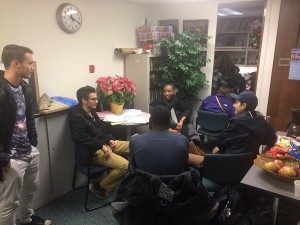Thus, I Have Heard
While listening to Alabama’s version of “The Christmas Shoes” which was written by Eddie Carswell and Leonard Ahlstrom, I mentioned that I have never liked the song which is set in a store on Christmas eve and recounts the story of a poor boy buying shoes for his dying mother because he wants “her to look beautiful, if mama meets Jesus tonight.” I told my husband that the story would be much better if the boy had the money to purchase the shoes and did not need to ask the narrator to help him pay for them. My husband replied, “If the boy had enough money, there would not have been anything for the narrator to do.”
My criticism is that once the narrator pays for the shoes, the story changes. It is no longer the story of the boy’s love for his dying mother. It is the story of the narrator’s generosity. The boy becomes a backdrop in front of which the narrator takes center stage.
It would be too easy to cite Matthew 6:5 to criticize the narrator for being like the hypocrites who pray standing in the Synagogues or on the street corners so that others can see their generosity. Yet, I do not believe that the criticism would be appropriate because the narrator is not trying to appropriate the boy’s story. He is trying to promote a spirit of generosity. Yet, Carswell and Ahlstrom could have chosen to allow the narrator to simply report and not participate.
In the Buddhist Pali Canon, the discourses of the Gautama Buddha begin “Evam me sutam” which is typically translated as “Thus, I have heard.” The Gautama Buddha did not write down his own discourses. Were it not for those who listened and then reported on what they had heard, we would not know any of his teachings. In a similar way, the message of the boy’s loving kindness would have been even more powerful had Carswell and Ahlstrom permitted the narrator to report “Evam me sutam” instead of entering the story himself.
As the semester ended, students gathered in my office to celebrate the quality work they accomplished throughout the semester. There are two ways to report their accomplishments. One is to stress my abilities as a professor who laid the groundwork for their success. The other is to step back and report “Evam me sutam.” Both have their place, but it is generally best when we focus on students and let them shine.
Part of the reason my students do brilliant work is because I carefully craft courses that lead to student success. But regardless of how well the ground is prepared, students succeed through their own efforts; not mine. While reporting on student success, it is tempting to forget those students who failed the same carefully crafted courses through their own efforts. I take neither blame nor credit for the choices individual students make.
So what were students celebrating when they gathered at my office?
Evam me sutam: Students in introductory classes can give 20-90 minute presentations based on research for which they have consulted 30-50 quality sources.
Evam me sutam: First year Freshman can work in teams to teach an entire class period inspired by the difficult concepts they encountered in Unflattening, the dissertation they read during the semester.
Evam me sutam: Freshman have successfully tackled Pedagogy of the Oppressed and other texts that too many would claim are too advanced for them to comprehend.
Evam me sutam: Students in introductory classes can publish and participate in national and international discussions concerning quality pedagogy where their observations and research are taken seriously.
Evam me sutam: When given the opportunity to design their own non-traditional projects, students work harder on their projects and learn more than those who are required–sans options–to write a traditional research paper.
Evam me sutam: Community College students have no trouble living up to high expectations; sometimes expectations that are higher than those experienced by their university colleagues.
Evam me sutam: Students who are challenged to work beyond their abilities discover that their abilities expand.
Evam me sutam: Students complete quality work that is worth celebrating.
More than 500 students have already shared their accomplishments through Scholarly Voices, College History, Film Studies, the Unflattening Portal, and Today in History; accomplishments which are being used as teaching materials and models for other students. There are more than 225 students whose accomplishments are in the que to be published.
Evam me sutam: Community College student writing is worth taking the time to read.
- –Steven L. Berg, PhD

LEAVE A COMMENT